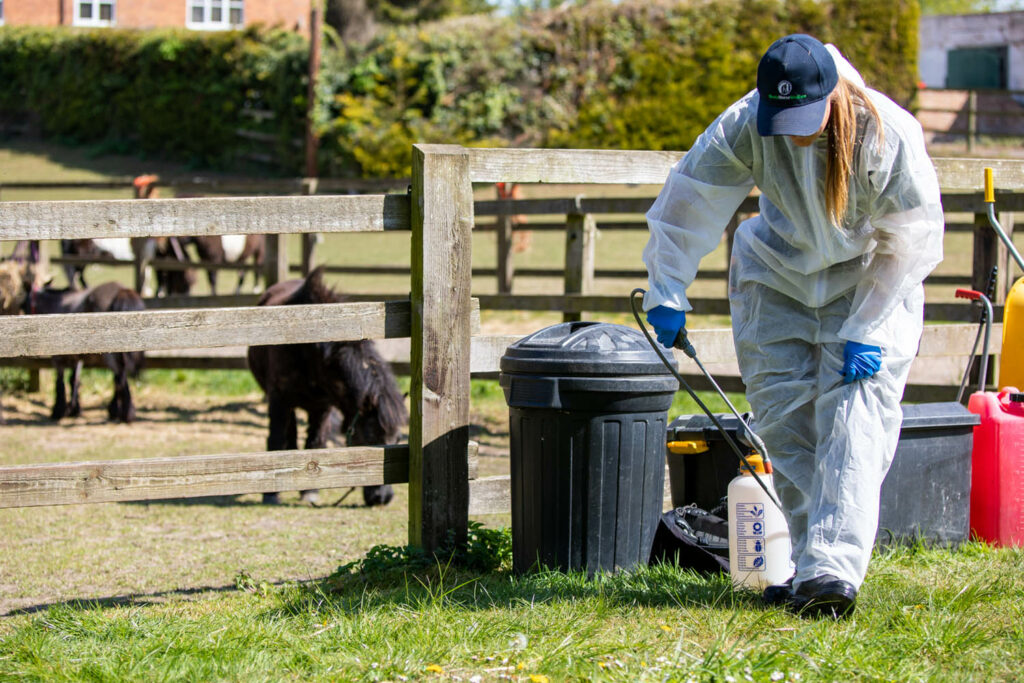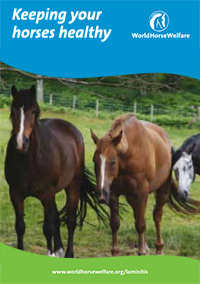The subject of infectious disease can cause a great deal of concern and stress for owners of horses and stable yards. Many diseases, such as equine flu and equine herpes virus, can be highly contagious and spread quickly and easily between horses. However, there are some simple steps that we can all take to identify disease as early as possible, reduce the risk of equine disease and ensure our horses stay fit and healthy.

Biosecurity measures you can implement at your yard:
- You can reduce the risk day-to-day by not sharing tack, buckets and brushes between different horses, as these can act as indirect means of spreading infections.
- Always obtain a full history of a new horse and undertake the necessary checks on vaccination history or any pre-arrival disease testing that may be required before it arrives e.g., strangles testing and stud farms may require testing for specific viral and bacterial venereal diseases.
- Maintain and encourage others to undertake good personal hygiene by washing hands regularly, avoiding touching and stroking unfamiliar horses.
- Regularly clean stabling and equipment and thoroughly clean and disinfect between horses, allowing sufficient time for disinfectant to work, ideally drying on treated surfaces.
- Avoid exposing your horse to unfamiliar horses, especially those with an unknown health status and those with signs of disease.
- Any new horse arriving on the yard, even though it is outwardly healthy, should be quarantined (kept separate) for at least three weeks before being introduced to other horses. Should you need to quarantine a new arrival make sure you have suitable facilities or are able to create a suitable temporary set-up.
- Ensure all horses on the yard are up to date with their routine health protocols such as vaccinations to prevent diseases and worm control measures. Use a health planner to keep track and ask your vet if there are any additional measures that you should be considering.
- If you suspect your horse has clinical signs of an infectious disease, isolate it immediately away from other horses on the premises and contact your vet for advice. Having an isolation procedure means you can effectively physically separate a potentially infected and infectious horse quickly should the need arise.
- Many infectious diseases display similar signs, especially in the early stages: a lack of appetite and energy, fever (>38.5°C), coughing or a snotty nose are just some of the things to look out for.
- Learn how to take your horse’s temperature – if you know what their normal temperature is you’ll be able to take action as quickly as possible if it spikes which is key in preventing the spread of disease. It is good practice to take and record your horse’s temperature twice a day at around the same times each day, as horses may not have a raised temperature for very long and this may be missed.
Biosecurity when you are away from your yard:
- Avoid exposing your horse to unfamiliar horses – as sociable as your horse may be. Don’t let them get nose-to-nose with their new best friend at a competition, training session or other outing, as this is how many respiratory infections are spread.
- Take your own equipment with you, such as water and buckets, and try to give you and your horse as much space as possible, avoiding areas where lots of horses are hanging out.
- Disinfect your trailer after each use or, if you are hiring a self-drive or using a transporter, make sure they have fully cleaned and disinfected the vehicle before you put your horse on board as non-disinfected boxes can be an unwitting source of infections.
- Monitor your horse’s temperature, heart rate and breathing more closely for a few weeks after any time spent off their normal yard, to make sure any changes are detected quickly.
- Keep up to date with equine disease alerts in your area, so you know if there is a disease outbreak locally and follow official advice. If in doubt, contact your vet.
Keeping your horse healthy

The Keeping your horse healthy pack aims:
- To highlight the need for every horse owner to be aware of diseases such as Equine Infectious Anaemia, Strangles and Flu.
- Offers simple steps to help protect horses from contracting and spreading diseases.
Popular advice in Health

Mites: how to treat them in horses
Find out how our experienced teams tackle this itchy problem in affected horses and ponies.

Sweet itch
Sweet itch is one of the most common allergic skin diseases affecting horses in the UK - learn how to prevent and manage it.
Other advice categories
All webinar categories:
Call our Advice Line
+44 (0)1953 497 238Not found the advice or answer you were looking for here? Then our Advice Line is available during office hours, or you can email us on education@worldhorsewelfare.org to let us know what topics you were looking for.


